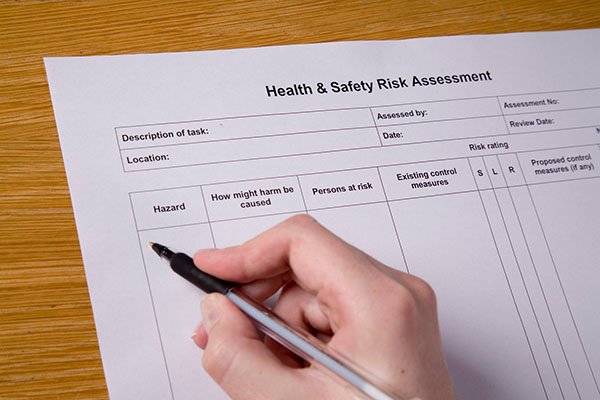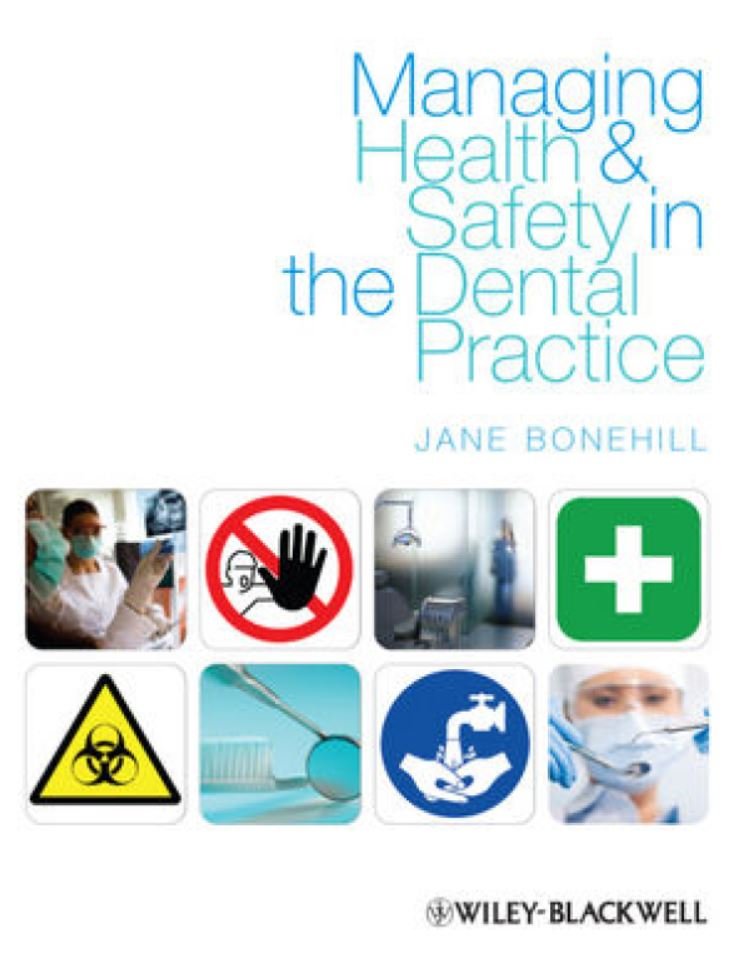A practical guide for Managing health and safety in the Dental Practice
how to use this manual ?
The advantages of this manual are that you can pick it up and, using the index or chapter tabs, sort through to the essential ‘need to’ and ‘should know’ information from the ‘might also want to know more about’ information. It is not intended that you read this manual from cover to cover.
However, it is advised that you read the next section ‘Introduction – legal information’. This will provide an insight into how health and safety is regulated and the responsibilities placed on individuals. The manual has been prepared in such a way that it guides you through the subject area. Each
chapter is structured as follows:
- A Graphic depicting the topic for ease of reference
- A bulleted list outlining the Scope of the chapter
- A list of Figures placed at the beginning of the chapter
- An Introduction to the subject to set the scene and outline the purpose
- A list of key Legislation relating to the subject
- The subject Content broken down into subheadings with reference to figures throughout the text
- A Summary to help reflection and to take on board the content
- Action check list to measure against your existing arrangements and working practices
- Frequently asked questions to assist with the practical application of the subject
- Links to other chapters for cross-referencing purposes
All members of the team, not just employers and managers, should use this manual.

Getting started
Familiarise yourself with the structure and format of this manual, and then study the index and identify the subjects, which in your practice, you feel, need addressing. At this stage, you will have just a ‘gut feeling’ and not an authoritative opinion. Then read through ‘Introduction – legal information’. Following this you may want to hold a practice meeting with all members of your team and ask them to prepare for the meeting by identifying any issues or suggestions they have about health and safety. You may have to provide key indicators to help, which could relate to the following:
- A recent incident where a patient was difficult or aggressive
- The use of a particular piece of equipment
- Preparing a hazardous substance
- Posture when treating patients
- ‘Good practice’ that a colleague from another dental practice has shared
- A course recently attended where an update on health and safety was given
- A new way of dismantling sharps that reduces the risk of an injury
In addition, you may want to ask your patients for their opinions and suggestions. However, be mindful of how you approach this as you do not
want to raise concerns unnecessarily.
Collate the information received, match it with your initial study and put it in an order of priority.
The MOP approach is quite useful:
- Must address immediately before anything else
- Ought to address within a set timescale
- Prefer to address now but other issues will take priority
Once you have done this you can now refer to the manual. Select the relevant chapters from your MOP list and determine if you are doing enough or if not, what can be done to
improve the situation and how are you going to achieve it? Remember, you do not have to read this manual all at once; it might be better to set reasonable targets and plan your schedule. Utilise the skills and knowledge within your team effectively to help develop your health and safety systems and procedures.
Table of Contents
Dedication vi
Acknowledgements vi
Preface vii
How to use this manual viii
Introduction – legal information x
1 Accidents and first aid 1
2 Alcohol, drugs and smoking 13
3 Communication and training 21
4 Conflict management 37
5 Disability access 47
6 Display screen equipment 54
7 Electrical safety 63
8 Fire safety and emergencies 67
9 Hazardous substances 84
10 Infection control 101
11 Lone working 110
12 Managing health and safety 117
13 Manual handling 143
14 Medical emergencies 151
15 Occupational health and well-being 160
16 Personal protective equipment 167
17 Policy 173
18 Radiation protection 181
19 Risk assessment 191
20 Stress management 209
21 Visitors, locums and contractors 221
22 Work equipment 228
23 Working environment 240
24 Working hours 251
Sources of advice and information 256
Index 257




